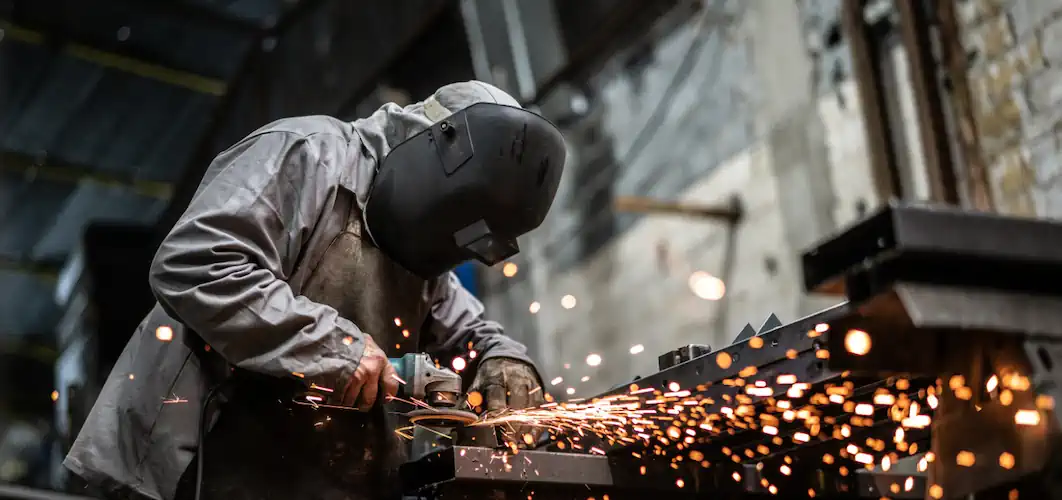Minimizing the Risks of Fire and Explosion in the Oil and Gas Industry
Workers in the oil and gas industry face the risk of the extraction, transportation, and processing of highly flammable materials. This introduces a risk of fire and explosion, that is heightened by the fact that oil and gas operations often take place in remote and challenging environments, where access to emergency services can be limited. Moreover, the equipment and processes used in the industry can be complex and require special training and expertise to operate safely.
COMMON RISKS OF FIRE AND EXPLOSION
Understanding and preventing risks in the oil and gas industry is crucial for business owners, safety managers, and employees.
- Ignition Sources
- Fuel Sources
Flammable gases, liquids, and dust are prevalent in the oil and gas industry, especially in high-pressure environments like gas pipelines, tanks, and vessels. Proper storage, transportation, and handling of these substances are crucial to prevent fires and explosions. Ensuring employee training is essential for identifying and safely managing potential fuel sources.
- Confinement
Containment of flammable materials poses an explosion risk, especially in areas with confined flammable gases and vapors, such as tanks and pipelines. Accumulation of these substances can lead to dangerous concentrations that ignite with a spark. Companies need strict policies for proper ventilation in confined spaces, ensuring employees adhere to guidelines, and conducting regular equipment inspections to promptly identify leaks and malfunctions, minimizing the risk of explosions.
- Equipment failure
Pumps, pressure vessels, and water heaters can all malfunction, increasing the risk of fire or explosion. Regular maintenance, testing, and inspection of critical equipment can identify equipment faults early enough to prevent accidents. It's crucial to pay close attention to the quality and condition of the equipment, in order to not only avoid accidents, but prevent deterioration.
Ignition sources, such as flames, sparks, and hot surfaces, pose a significant risk of flash fires and explosions in the oil and gas industry. To mitigate this risk, companies should ensure proper grounding, bonding, and a robust electrical system. Additionally, eliminate flames and sparks, and insulate or guard hot surfaces to prevent accidental contact.

MEASURES TO PREVENT EXPLOSION
Ensuring Proper Ventilation
Effective ventilation maintains a safe oxygen level, reduces the concentration of flammable gases or vapors, and minimizes the likelihood of an explosion. Companies can achieve proper ventilation through system installation or natural means. Regular maintenance, including cleaning and repairs, ensures the system's effectiveness.
Implementing Electrical Safety Protocols
Implementing electrical safety protocols can prevent electrical faults. These safety protocols include ensuring proper installation and maintenance of electrical equipment, using grounding wires and circuit breakers.
Using Inert Gas Purging Systems
Inert gas purging displaces flammable gases by replacing air with inert gases like nitrogen or carbon dioxide in equipment and storage tanks. This reduces the concentration of flammable materials, significantly lowering the risk of explosions.
Using Explosion Suppression and Detection Systems
Explosion suppression systems swiftly detect and surprise fires, preventing their spread. They employ water, foam, or chemicals for suppression. Simultaneously, explosion detection systems identify flammable gases, activating alarms for immediate worker action. These systems, crucial for life and property protection, employ various detection methods such as infrared, catalytic, and electrochemical sensors.
In oil rigs, fixed explosion detection systems like flame and gas detection use infrared and ultraviolet sensors, triggering alarms for evacuation. Point gas detection systems, also fixed, use sensors at specific locations for detection. Portable systems with electrochemical sensors are used for on-the-spot gas presence checks, triggering alarms when needed.

Equipment for Explosion Protection
Explosion-proof Electrical Systems
Explosion-proof electrical systems are designed to prevent flames or sparks from escaping the electrical equipment by containing them within an enclosed area. This can prevent the spread of the disaster to other parts of the building or equipment.
Administrative Controls
Administrative controls focus on safety policies and procedures, as well as providing the necessary training to workers. This may involve conducting safety meetings or toolbox talks, implementing a buddy system, or designating a safety officer for the worksite.
Flame Arrestors
Flame arrestors are instilled on pipes to prevent external and internal flames from entering confined spaces. By containing a mesh or a heat-absorbing material, not only does it separate the flame and the flammable mixture, but it blocks gases or vapors to pass through.
Pressure Relief Valves
Pressure relief valves protect tanks, pipes, and vessels from overpressure, by opening when the internal pressure of the equipment reaches a predetermined limit. This process helps keep the pressure at a safe level, preventing explosions.















